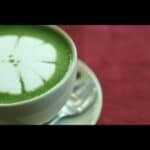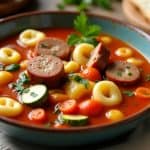Spiced Tea
Tea and spices have a long history of pairing. Spices and teas…
…appear to mix well together, from the early days of tea as a medicine, when it was combined with medical herbs and boiled for its therapeutic powers, to the contemporary usage of spices as tea flavorings. Learn everything there is to know about spiced teas, including what they are, where they are consumed, how to prepare them at home, and much more.
History of Spiced Tea
Broadly speaking, spiced teas are “true teas” (teas made from Camellia sinensis) blended with spices, steeped with spices or boiled with spices. The term “spiced tea” sometimes also refers to herbal teas made up primarily of spices (though some use rooibos or other herbs as a “base” in the blend). The earliest written record of tea comes from China in 2737 B.C., but there has been evidence found showing people drinking tea as far back as 3000-2500 BC. In India the first documented mention of tea dates back to 500 AD, while the Chinese drink their tea around 1000 years ago.
The word “tea” actually means something like “hot water,” which makes sense since most hot drinks were made by steeping leaves or buds in boiling water until the beverage had cooled down enough to be consumed. Since then many different types of tea have evolved, some flavored with fruits, flowers, nuts, spices, honey, milk, etc. Today you can find everything from green tea, black tea and white tea. There’s also herbal tea, fruit infused tea, japanese matcha, chai tea, pu erh tea, oolong tea, green rooibos tea, and much more!
Taste of Spiced Tea
The primary flavors that make up spiced tea come from the spice itself rather than any herb used in making the tea. Some common spices include ginger, cinnamon, nutmeg, clove, cardamom, allspice, vanilla, peppermint, rosemary, sage, basil, thyme, lavender, lemon balm, mints, citrus peel, and many more!
These ingredients may be added individually or mixed into one large batch before adding the tea. It really depends on your preference. If you want a stronger spice flavor, add more spices. If you prefer less spice, take out parts of the recipe. You’ll get the best results if you follow this general guideline: 1/4 teaspoon per cup of brewed tea.
Varieties of Spiced Tea
Spices have been used in tea for nearly as long as tea has been consumed, therefore there are several variants on spiced tea beverages. Some of the most well-known spiced teas in the world are:
- Masala chai: Also known as “chai tea,” masala chai is a popular spiced beverage in India. It can be prepared with a single spice (such as ginger or cloves) or with a spice combination. Despite its origins in northern India, chai is now consumed in a variety of nations across the world.
- Ginger tea: Ginger is found in many spiced tea blends and freshly made spicy teas. Ginger pairs nicely with green tea, black tea, puerh tea, and occasionally oolong tea. It imparts a warming, spicy, and somewhat sweet flavor to teas. Ginger has been used in tea from ancient times in China and is being used in tea now.
- Cinnamon tea: While cinnamon is often used to flavor black teas, it can also be used to flavor some green, oolong, and puerh teas. It has a sweet, toasty taste that complements fruit in tea drinks. The use of cinnamon to produce spiced teas believed to have started in India.
- Mint tea: A herb-tea blend rather than a spice tea, mint tea can refer to an infusion or decoction of mint leaves or a drink prepared with real tea and mint. Morocco is well-known for its mint tea, which is a boiling combination of fresh mint and Gunpowder green tea. Other types of mint tea are popular all around the world.
Was this helpful?
Hi there! I’m a food enthusiast and journalist, and I have a real passion for food that goes beyond the kitchen. I love my dream job and I’m lucky enough to be able to share my knowledge with readers of several large media outlets. My specialty is writing engaging food-related content, and I take pride in being able to connect with my audience. I’m known for my creativity in the kitchen, and I’m confident that I can be the perfect guide for anyone looking to take their culinary journey to the next level.








